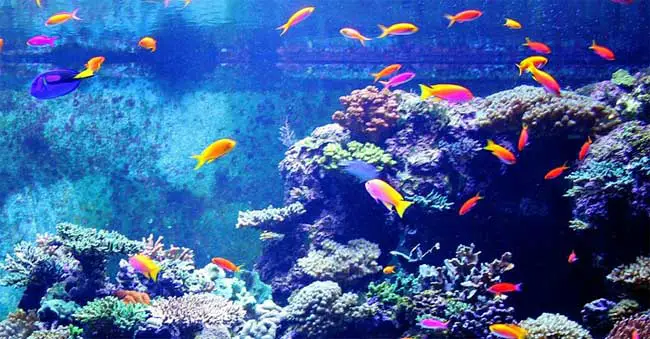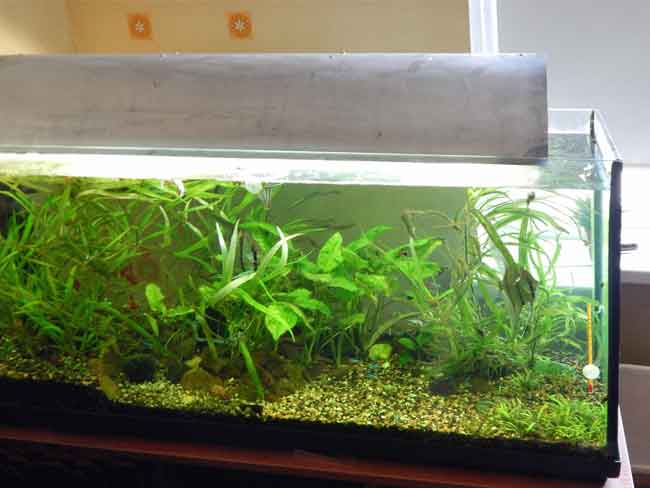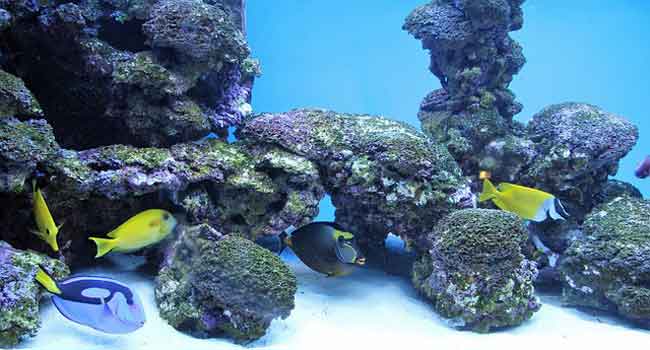It’s not always easy to tell if you are keeping too many fish in the aquarium. Here are some tips and a guide to know for sure when the aquarium is overstocked.
Is My Aquarium Overstocked With Fish?
A good rule is to have no more than 1 inch of fish per gallon of water. This is for smaller fish like guppies and bettas. Larger fish will need around 3 gallons of water per inch. Remember to take into account that most fish will grow bigger over time.
This is the (very) short and precise answer.
Here are exactly what you need to know in order to avoid overstocking in the aquarium.
Table of Contents
Let’s look at the five most common ways to know whether you are overstocking your aquarium.
The truth is that it really depends on a lot of factors but there are some clear guidelines to follow and some good indicators to look for.
5 Signs That Your Aquarium Is Overstocked
It’s nice to keep a lot of fish in the tank but it can easily get too much.
It’s sometimes confusing for people to visit the pet store because they often have a ton of fish in small aquariums. They can do so because they have a massive pump system and they filtrate and clean the water regularly.
When you’re working with a regular size aquarium with a natural cycle to keep the water clean, you cannot keep as many fish as they can in the pet store.
It’s not always easy to know exactly when you are reaching the limits so here are some tips to get it solved.
1) Aggressive fish may be a sign

If the fishing aggressive and start punching each other it might be a sign that they are running out of space.
The fish should behave nicely and not start hunting each other. They might swim after each other for foreplay and fun but they should not start biting and get aggressive.
This is one of the most visual signs of the aquarium getting overstocked. It’s therefore important that you watch how the fish behave and make sure they do not show any signs of aggression.
2) High ammonia levels
The excretes from the fish contain ammonia. And if you have too many fish you will have too much ammonia in the water.
This would be a clear sign that the cycle is not running well because the ammonia is not broken down into nitrites. This will typically happen if you have to many fish in the aquarium or if the fish are too big for your tank.
3) Diseases are showing
If you’re having problems with diseases and you have already tested your water properly (to make sure the cycle is running as it should) you might also have a problem with overstocking.
It’s not always easy to tell if the fish are sick that sometimes you can tell from the color is if they start behaving weirdly.
You might notice some fish starting to swim slower or just look dizzy or disorientated. They might also stop eating if they get sick or they might eat less than they should.
So pay attention to how they behave when you’re introducing the food into the water. You should know how they normally behave and if they start ignoring the food it’s a sign that they might be sick.
4) Stressed out fish
So we talked about the fish being too passive but they might also react differently due to overstocking.
If they’re too many fish in the tank they might also get all stressed out.
They might not get aggressive as we talked about and start hunting each other but they might get really busy and show signs of stress.
If you’re new to the whole aquarium thing it might not be easy to tell whether the fish are stressed out or just being playful and happy. So here’s a few signs you can look for:
- Are they swimming fast all day long?
- Are they swimming in circles without interacting with the food?
- Are they gasping at the surface?
- Are they swimming into each other or into the items in the tank?
These are all common things to look for if you want to know whether your fish are suffering from stress.
5) Too short lifespans
You might also experience problems with the short lifespan of the fish.
When your aquarium is overstocked there’s simply not room enough for all the fish to thrive. So oftentimes the fish will live a short life which is a shame.
If you sixpack this to be happening you should definitely take out a few fish to lower the amount of fish in the tank.
How Many Fish Can I Have Before The Aquarium Is Overstocked?
It’s hard to put a specific number on because it varies from each setup to the next. But here are some general rules you can follow in order to make sure that the bowl isn’t too overstocked.
1) Start with a few fish
You should always start a new aquarium by only introducing a few fish. This is also the best way to make sure you have the cycle running properly before you introduce more fish.
Guppies and goldfish are great species to start out with because they are easy to keep alive and they are more robust than many other species.
2) A good metric to follow
And very simple metric to follow is this guideline:
Limit the amount of fish to 1 inch of fish per gallon of water.
These numbers are great when you are keeping Bettas, Rainbow Fish, Guppies, and other smaller species. But with larger species, the numbers might not make sense.
Larger fish like Koi fish, Oscars, Catfish, Piranhas, etc. will need more water per inch. Here you will need closer to 3 gallons per inch of fish.
This is a very simple way to measure the amount of fish in your aquarium and it’s probably too simplistic. But it’s sometimes nice to have at least some way of measuring whether you’re way off the limits.
You can also do this another way. If you’re not used to calculating by gallons and prefer liters, here’s what you can do:
Make sure you have no more than 3 grams of fish per 10 liters of water. This is another way to make sure that you’re not overstocking. As long as you follow these rules you should be on the safe side.
3) It depends on the type of fish
One of the main questions here are how much poop you have to deal with. Some fish breeds will produce a lot of waste while others wouldn’t only poop a little bit.
This is something do need to check with the pet store before you put the fish in the tank.
It also varies a lot how much the fish will grow during its lifetime. This leads us to the next point.
Remember That Your Fish Might Grow Bigger!
You should remember that many types of fish might grow during their lifetime.
You need to make sure whether the species you are buying are fully grown or if they will become bigger. Otherwise, you might end up overstocking your aquarium even though you started outright.
It’s almost impossible to put numbers on how much fish will grow during their lifetime. This is because it varies a lot from species to species. You need to ask the seller when you buy the fish to make sure you know exactly how big your little cute fish will get.
Again, it’s always better to start out small and then build up the flock of fish over time. That’s the only way you can know for sure that you’re not overstocking your aquarium. It’s also a safe way to make sure the fish are not getting stressed out from mixing too many species and sizes.
Leave room for babies!
You should also leave room for little baby fish if your fish may start to breed.
Make sure you know exactly what to expect here as you might quickly overstock your aquarium if you are not keeping track of the breeding.






